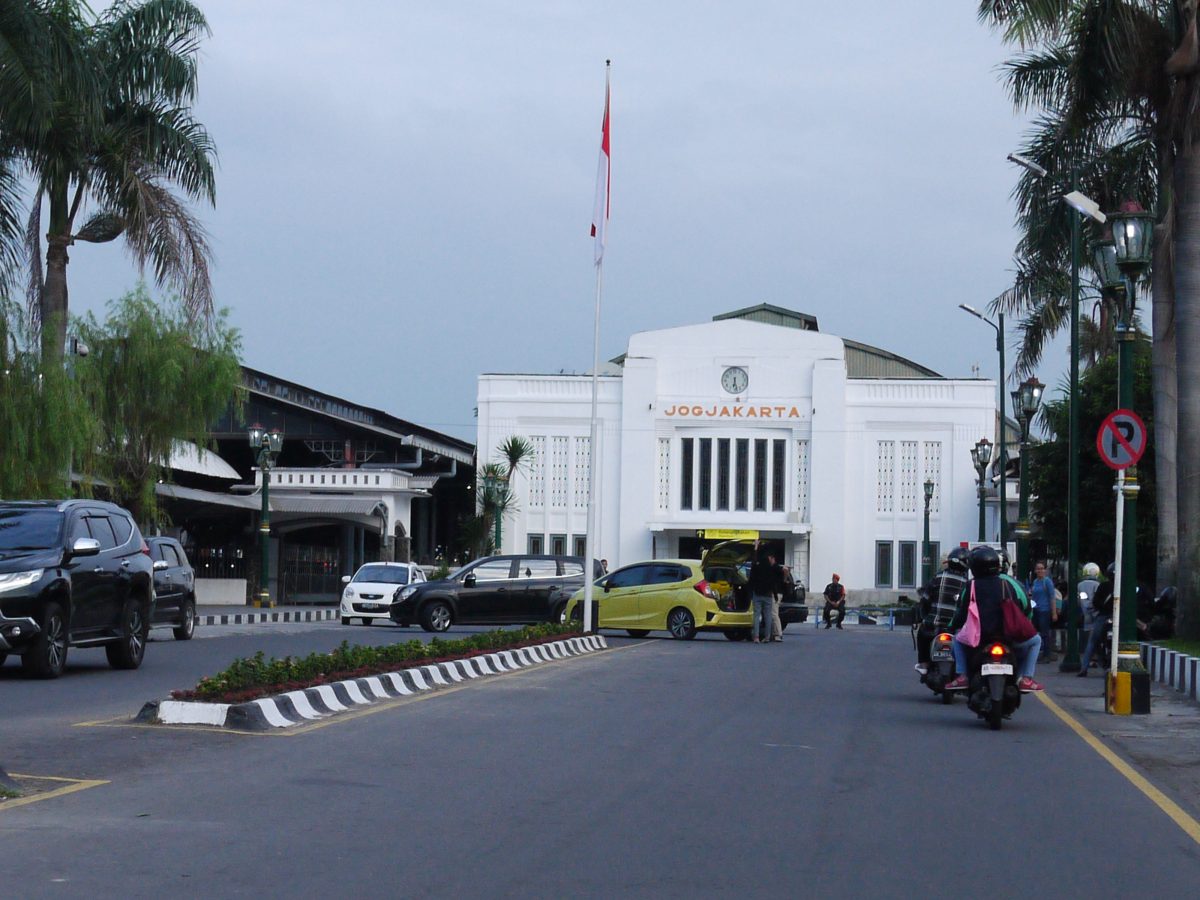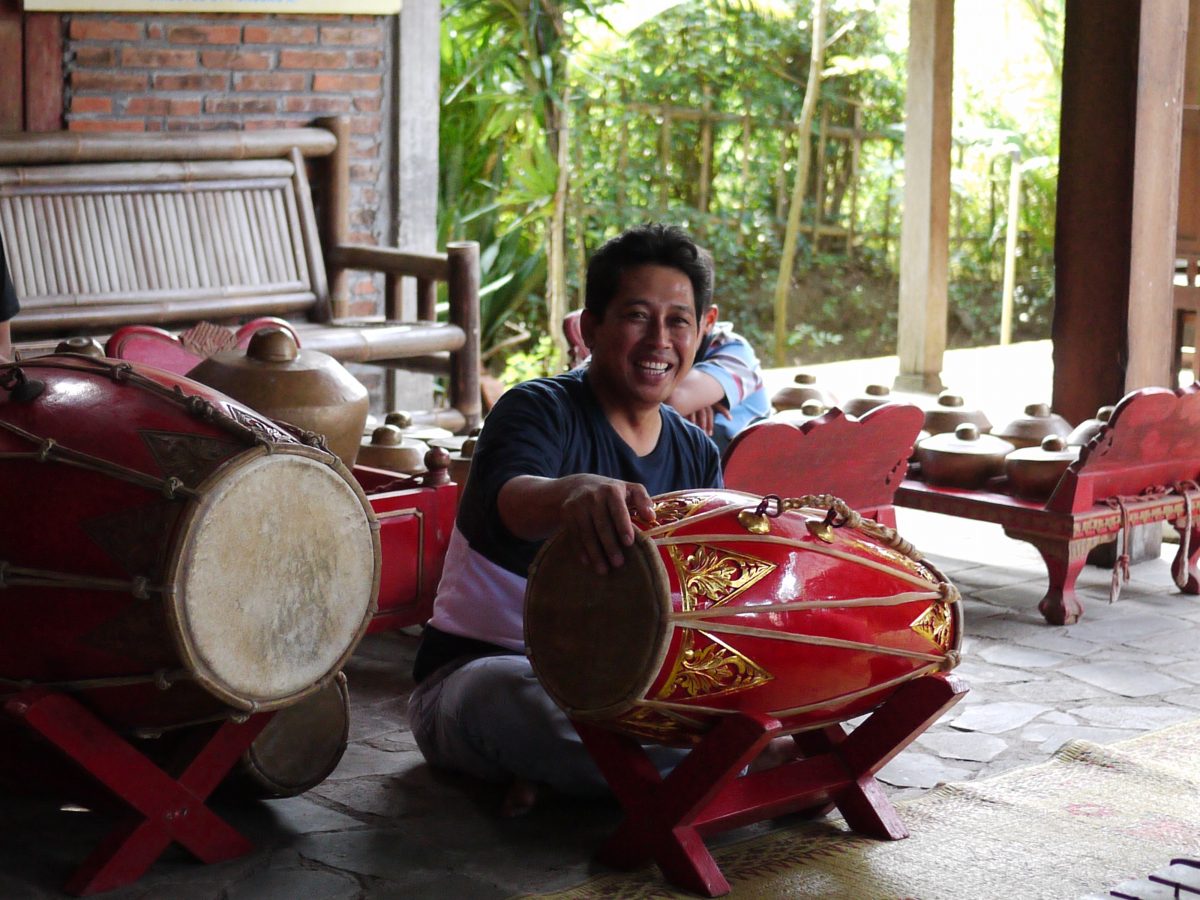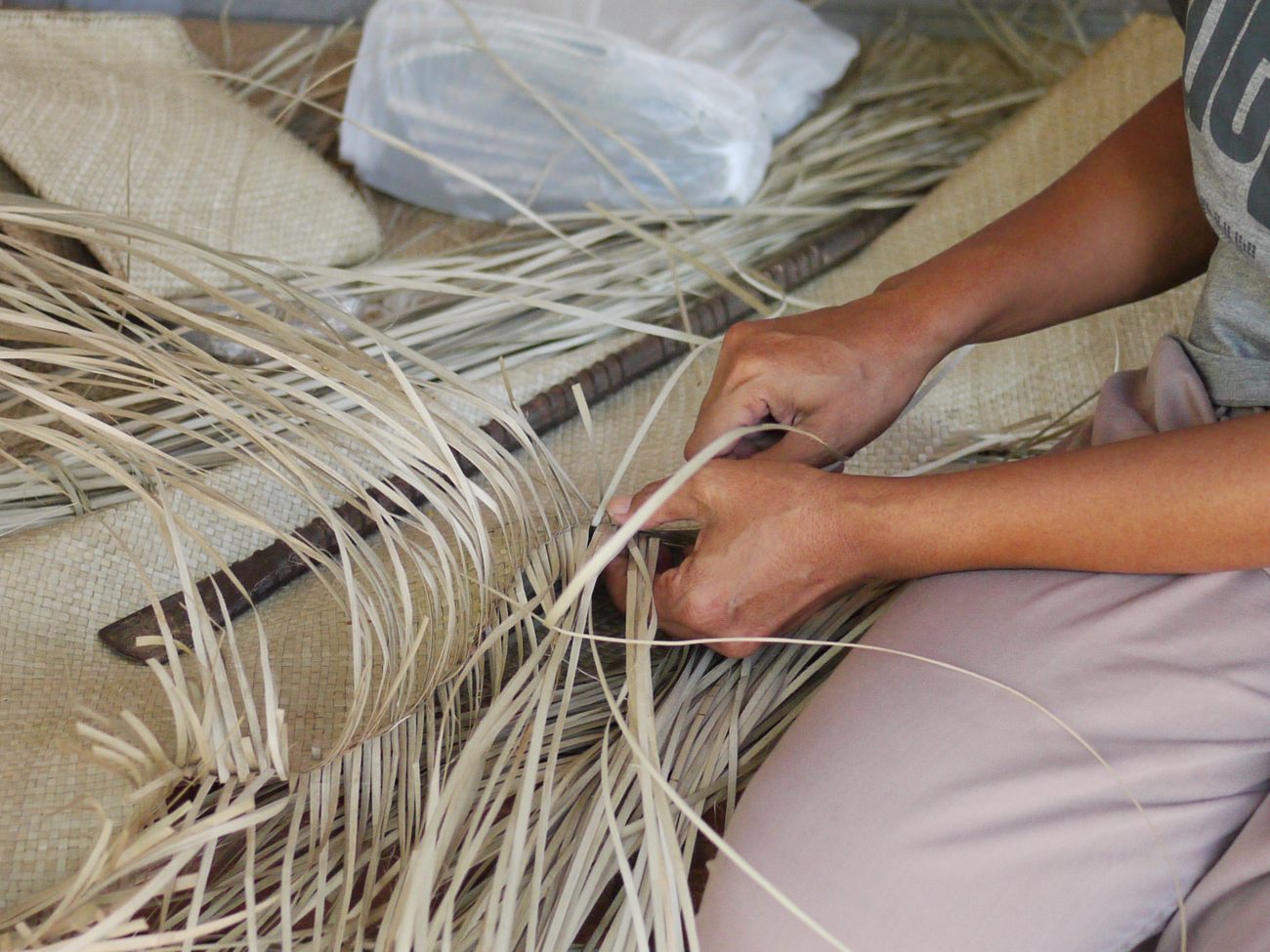Like Zanzibar, Samarkand or Cuzco, the island of Java evokes a dreamed, fantasized destination. The images of lush and surprising vegetation, ancestral cultural sites and a welcome population seduce all those who like to get lost for no reason on hiking trails and go to meet others with, as the only desire, the discovery. An ideal cocktail to seduce visitors to the island. The persistent hot breath of post-monsoon envelops as soon as you leave the airport. Like the high humidity so characteristic of the tropics. In the distance resounds the voice of the muezzin, the call to prayer. A group of young women wear the jilbab, the Islamic veil. Who expects to feel immediately in Asia must wait, observe. Even look for the little signs that remind us of the Far East. Here, in Java, the most populated island in the world with 140 million inhabitants out of the 240 million in Indonesia, it is instead the East that makes itself felt. An East that would leave Arabia to join – or rather to mingle – with Buddhist and Hindu rituals against a backdrop of animism. A broth of culture as extraordinary as it can confuse travellers. Many business travellers.

Yogyakarta
In the centre of the island, Yogajakarta is the spiritual capital of Java. People of different beliefs, animists, Buddhists, Hindus, Muslims and Catholics live together here.
Each has dedicated places of worship. In the surrounding countryside, the sound volume of the city gives way to the singing of birds. Early in the morning, mist envelops the jungle, the lush vegetation that blossoms under the dampness and heat, both suffocating and reassuring like a permanent reminder of the island. Along the roads – in excellent condition – stretch terraced rice fields, at a maximum altitude of 500 m, as in Losari. In the distance, the silhouette of a woman paces back and forth across the area to scare away grasshoppers and other harvest-eating birds. A living scarecrow stands out from the soft green of the plantation. Hybrid rice is harvested here after 90 days, by hand, three times a year before being stored in plumbing, a rice granary on stilts. Older farmers still use the ani ani, a special knife, while others prefer chirouri. Rice paddies still occupy a lot of arable lands, a crop necessary to feed the 240 million Indonesians, 140 million of whom live on the island of Java. In the villages, the turquoise of the mosques’ domes contrasts with the omnipresent palette of greens of the luxuriant nature, the tall trees and the banana trees with their big leaves.
Spiritual Cultures

In addition to the lush vegetation, Java conceals cultural treasures reminiscent of the successive waves of immigration, settlers from Europe. From Losari, north-west of Yogyakarta, the Dieng Plateau can be seen at an altitude of 2008 meters. The road is lined with terraced crops (mainly potatoes), tea plantations and fruit trees, villages inhabited by Hindus, all dominated by imposing volcanoes. North of the town of Wonosobo, a caldera emerges from the early morning mist 8 Hindu temples, the oldest in Indonesia. Built around the 8th and 9th century in front of the active volcanic crater of Kawah Sikidang, these small buildings were discovered recently, in 1814, by a British soldier. They were then immersed in the lake. The main one, Candi Arjuna, occupies the centre. On this foggy morning, many visitors come here. Two veiled young mothers watch their children climbing rocks, here and there, while playing dakon, a variation of stone-leaf-scissors – and laughing. Two female students take turns taking pictures of each other on the steps of Candi Arjuna while the call to prayer resounds in the nearby village. The other three temples can be seen a little higher up, while an improbable museum houses original temple statues.
Two minutes by car, the Sikidang crater gives off strong smells of sulfur that permeate the clothes. “Hati Hati” (caution, in Indonesian) is a reminder that boiling water is a potential danger. All along the path leading to the entrance, rudimentary stalls offer chips of all colours, pumice stones and sand with exfoliating properties. A newlywed couple poses in the middle of this no-man’s-land, a surrealist setting of a cliché destined to represent this union for all eternity. Legend has it that Queen Shinta Dewi refused the marriage proposal of King Kidang Garungan, with the body of a deer. She would then have asked him to build a deep well under which his soldiers buried him before the end of its construction. Furious, the king managed, by magic, to “explode” of anger. The crater was thus born—one more story to be transmitted from generation to generation, whatever the religion of the families. Spirituality is conjugated here in the plural.
Myths and mysticism
Two hours drive away is the most visited site in Indonesia, Borobudur. The grail consists, for any visitor, to tread the ground of this exceptional complex built in the 9th century A.D. at sunrise. A good idea in itself if it were not shared by hundreds of tourists concentrated on 120 m2 and obsessed with the gradual sunrise between two volcano peaks. What, at the time, is somewhat annoying reveals an intense personal satisfaction. An intimate wonder, from the selfies to the perfect pose of Chinese tourists to the meditation sessions in front of the sun. An incredible energy emanates from this moment, an astonishing communion far from what such a gathering of people suggests—a serenity broken by the bursting of cameras. The day finally dawns and lets discover a complex of temples in the form of stupa, the representation of the cosmos in three parts superimposed on nine levels. It was necessary to wait for its restoration – from 1907 to 1911 by the Dutch government – then the colossal work carried out by Unesco from 1973, to measure all the richness of the site abandoned for centuries, covered with volcanic ash from the Gunung Merapi volcano. One only has to wait an hour to realize that the flow of tourists has given way to a little frequented site. It is now possible to admire the surrounding vegetation, the volcanoes on the horizon and above all, the processional terraces, the square galleries, the bas-reliefs relating the life of Siddharta, the scenes of daily life in Java, the niches with 432 stone Buddhas and the 72 openwork dagoba (stupas). Simply unique.
Full of energy

Filled with these positive energies, the arrival in Yogyakarta, in the centre of the island, is peaceful. Considered as the cultural capital, the city of about 400,000 inhabitants brings together all the religious and cultural diversities of the island. The inhabitants confirm this good cultural understanding, mainly resulting from the respect of each person’s beliefs. Asia is not apparent, and one looks for the distinct signs of this continent with its typical architecture, spicy gastronomy, faces with slanting eyes, omnipresent smiles and ultra colourful outfits. Here, the fragrances are always bearable, the Rumah bangsal kencono (traditional houses) become rare, giving way to hybrid constructions made of concrete, wood and metal, without harmony. Only the coming and going of motorcycles on which 2, 3 or 4 passengers pile up answers to the clichés of this South-East Asia. Several images of Asia are superimposed on Java, shaking up the preconceived ideas and landmarks accumulated during travels. The heat that makes you sweat in less than a minute, the two-wheelers by the thousands, the markets with their tenacious smells and unlikely varieties of fruits and vegetables, the thousands of spices, including an incredible nutmeg or a fried grated coconut to sprinkle on the rice… all the ingredients that make an Asian city an Asian city are there. And yet, the usual hubbub does not exist. The effervescence disappears in favour of a superfluous, almost non-existent noise pollution. Even the Kraton, a palace of the sultan-governor of the province, Hamengku Buwono X, seems uninhabited. Nearly 3000 people, including men, wearing black hats, sarong and Kriss, a sword, and it has 500 servants. In the heart of the palace, the various cultural influences appear on the detail of the door, railing, roof. Yogyakarta, in addition to its touristic interest for the palace, the puppet-making workshops and the traditional batik fabric, offers especially the advantage of being located about fifteen kilometres from the temples of Prambanan.
If Borobudur gives off unique energy, Prambanan’s life is even more intense. The site, a UNESCO World Heritage Site, seems to spring up from the ground with its three main buildings dedicated to Vishnu, Brahma and Shiva. Sculptures and bas-reliefs narrating the epic of the Ramayana can be discovered around each temple. A feeling of unparalleled tranquillity combined with a desire to touch these gemstones immediately inhabits us. The ensemble of temples, the embodiment of Hindu culture in Java, is more than seductive, it astounds. At the end of the day, around 5 pm, as the sun sets, the atmosphere becomes surreal. Nothing more disturbs the ambient peace and quiet, except for the guards reminding visitors that it is time to leave the place, soothed, filled with this inner peace.
In the distance, the call of prayer rings out. The site of Prambanan closes its doors. To prolong these precious moments where time seems suspended, a visit to the Bromo Tengger nature reserve is a must. At 10 hours by car or 6 hours by train followed by 2-3 hours by road, the Bromo volcano, a right place of worship, is venerated each year by thousands of pilgrims.
Most often accompanied by priests, on the day of the full moon in the month of kesodo, they throw offerings into the crater to thank the gods for fertilizing the land in the area. Watching the sunrise over the natural site is breathtaking. The crowd that attends the event from an observation point installed at 2492 meters above sea level marvels in silence at this spectacular view of the Caldera del Tengger, the peaks of volcanoes and the plains above which a light mist floats that quickly dissipates. The atmosphere is, once again, spiritual, despite the flashes of the cameras and other telephones. It’s time to get back in the jeep to reach the volcano. After a good half-hour walk, finally, the 250 steps of the staircase leading to the crater rim appear. The procession can begin. At the top, the view is extraordinary. A lunar landscape composed of a vast plain, mountains and volcanoes more or less high. And above all, this feeling of being at the end of the world. With in the background this time, not the call of prayer, but the foamy sound of the bubbling lava, telluric, ready to swallow us. Remains of offerings cling to the walls of the crater. As if to remind us that Islam, meditation, and offerings are inseparable from Javanese life. A broth of cultures to be savoured without moderation to live one’s karma as it should be.
Sokha Keo
Indonesia
The Republic of Indonesia is one of the largest island archipelagos in the world with 13466 islands. According to Chinese chronicles, trade between India, China and these islands was developed as early as the first century A.D. The population is estimated at 240 million inhabitants, 140 million of which live on the island of Java alone. The maritime empire of Sriwijaya with its capital in South Sumatra was a centre of Buddhist learning between the 7th and 13th centuries. 13th century, Islam entered through trade with India. The traders brought different religions: Buddhism, Hinduism, Islam, significant influences for the culture of Indonesia. Only the Europeans colonized these islands: Marco Polo first, followed by the Portuguese and Spanish, then in 1596 by the Dutch. Independence on August 17, 1945, by the Soekarno and Hatta rulers but official recognition of the Dutch in 1950.
photo credits: Sokha Keo